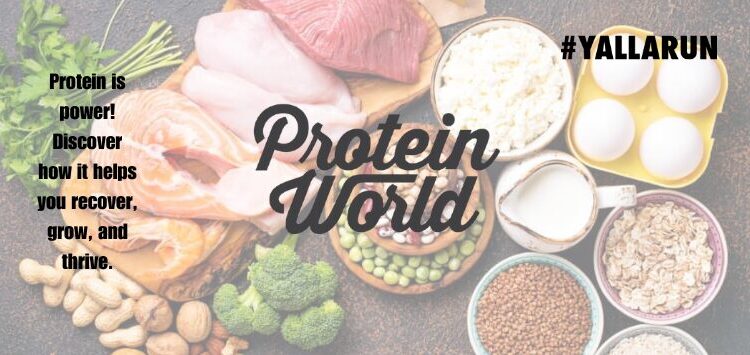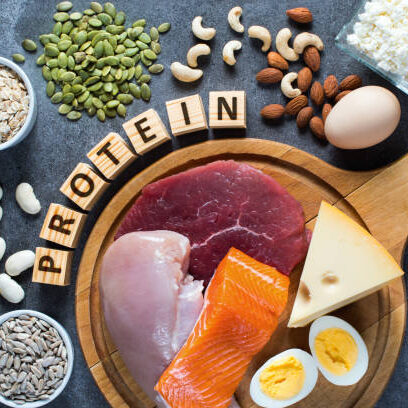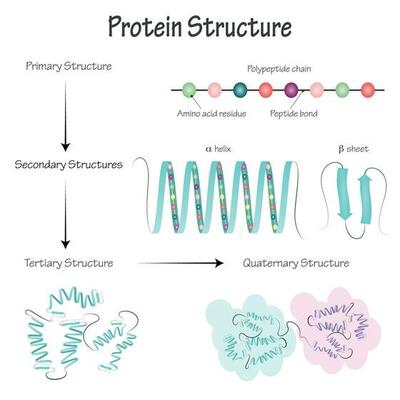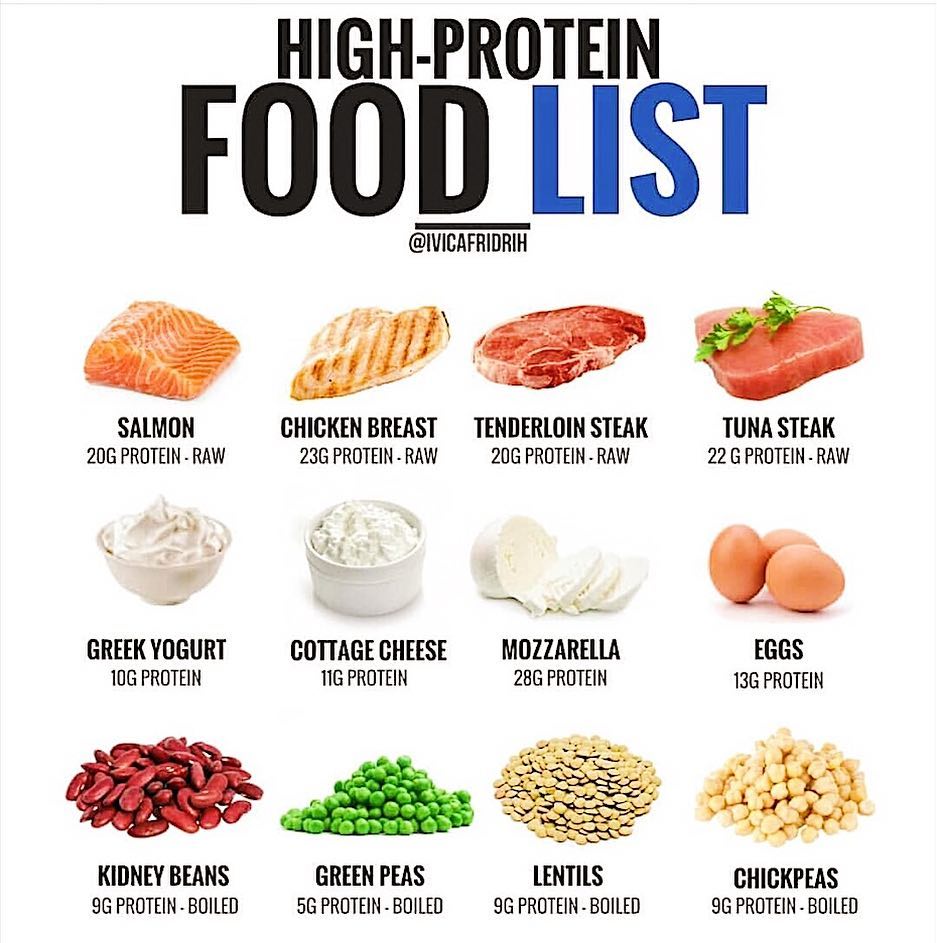
Proteins are one of the most important substances found in living things. They play crucial roles in the structure and functions of the body. From building muscles to fighting diseases, proteins are essential for our health. This article will explore everything you need to know about proteins, including their structure, functions, sources, recommended intake, and much more.
What Are Proteins?
At their most basic level, proteins are large molecules made up of smaller units called amino acids. There are 20 different amino acids that combine in various ways to create thousands of different proteins. Imagine proteins as a special type of Lego structure, where each Lego piece is an amino acid. The way these pieces fit together determines the type and purpose of the protein.

The Importance of Protein
Proteins are often referred to as the “building blocks of life.” This nickname is deserved for several reasons:
- Cell Structure: Proteins are essential for the structure of cells. They help to create and maintain the cells in our body, including muscle cells, skin cells, and cells in vital organs.
- Enzymes: Many proteins function as enzymes, which are substances that speed up chemical reactions in the body. These reactions are important for digestion, metabolism, and many other functions. For example, enzymes help break down food into nutrients that the body can use.
- Transport: Proteins assist in transporting substances throughout the body. Hemoglobin, a protein in red blood cells, carries oxygen from the lungs to the rest of the body, ensuring that all cells get the oxygen they need to function.
- Immune Function: Proteins are crucial for the immune system. Antibodies are proteins that help the body fight infections by recognizing harmful invaders like bacteria and viruses.
- Hormones: Some proteins act as hormones, which are chemical messengers that help regulate various functions in the body, including growth, metabolism, and mood. Insulin, for instance, is a hormone that helps control blood sugar levels.
- Muscle and Tissue Repair: Proteins are vital for repairing and building tissues. After exercise or injury, a diet rich in protein helps your muscles recover and grow.
The Structure of Proteins
Protein have complex structures, and their form is closely tied to their function. The structure of proteins can be broken down into four main levels:
- Primary Structure: This is the simplest level, referring to the specific sequence of amino acids in a protein chain. The order of these amino acids is crucial because even a slight change can affect the protein’s function.
- Secondary Structure: This level involves the local folding of the amino acid chain into shapes such as alpha-helices and beta-sheets. This folding is stabilized by hydrogen bonds.
- Tertiary Structure: The overall three-dimensional shape of a protein is known as its tertiary structure. This shape forms when the different parts of the chain fold into a compact structure due to various interactions between amino acid side chains.
- Quaternary Structure: Some proteins are made up of more than one amino acid chain. The arrangement and interaction of these multiple chains create the protein’s quaternary structure. An example is hemoglobin, which consists of four protein chains working together to transport oxygen.

Types of Proteins
Proteins can be classified into two main categories: Complete Proteins and Incomplete Proteins.
- Complete Proteins: These contain all nine essential amino acids that the body cannot produce on its own. Most animal-based proteins—like meat, fish, eggs, and dairy products—are complete proteins.
- Incomplete Proteins: These do not contain all essential amino acids. Most plant-based proteins, such as grains, beans, lentils, nuts, and seeds, are considered incomplete. However, by combining different plant foods, such as rice and beans, you can create a meal that provides all essential amino acids.
Sources of Protein
Getting enough protein in your diet is essential for good health. There are many sources of protein available, including:
- Animal Sources:
- Meat (beef, pork, lamb)
- Poultry (chicken, turkey)
- Fish and seafood
- Eggs
- Dairy products (milk, yogurt, cheese)
- Plant Sources:
- Legumes (beans, lentils, chickpeas)
- Nuts and seeds (almonds, walnuts, chia seeds)
- Whole grains (quinoa, brown rice, oats)
- Soy products (tofu, tempeh, edamame)
It’s essential to have a mix of both animal and plant sources for a balanced protein intake.

How Much Protein Do You Need?
The amount of protein you need can vary based on several factors, including age, sex, activity level, and overall health. The general recommendation for adults is about:
- 46 grams per day for women
- 56 grams per day for men
However, if you are an athlete or engage in regular intense physical activity, your protein needs may be higher, often ranging from 1.2 to 2.0 grams of protein per kilogram of body weight.
Health Benefits of Protein
Incorporating protein into your diet has numerous health benefits, including:
- Muscle Growth and Repair: Consuming adequate protein helps in repairing muscles after exercise and supports growth.
- Weight Management: High-protein diets can help you feel fuller for longer, reducing appetite and aiding in weight management. This is because protein takes longer to digest compared to carbohydrates.
- Maintaining Bone Health: Some studies suggest that sufficient protein intake is important for bone health and may help prevent bone loss as we age.
- Improved Immune Function: A protein-rich diet supports the immune system by aiding the production of antibodies.
Possible Risks of Too Much Protein
While protein is essential, consuming too much of it can lead to some health issues, including:
- Kidney Damage: For individuals with pre-existing kidney conditions, high protein intake can strain the kidneys.
- Bone Health Issues: Some studies suggest that excessively high protein diets may lead to calcium loss, affecting bone health negatively over time.
- Weight Gain: Overeating any macronutrient, including protein, can lead to weight gain, especially if it leads to a calorie surplus.
Conclusion
In conclusion, proteins are essential molecules that play crucial roles in our bodies.
They are necessary for building and repairing tissues, aiding in metabolism, transporting molecules, and keeping our immune systems strong.
Understanding the importance of proteins, their sources, and how much you should consume is vital for maintaining overall health and wellness.
By incorporating a variety of protein-rich foods into your diet, you can ensure you meet your body’s needs while enjoying the many health benefits that proteins offer.
Whether you prefer animal-based or plant-based proteins, a balanced approach to protein intake can help you lead a healthier, more active life.

Leave a Reply